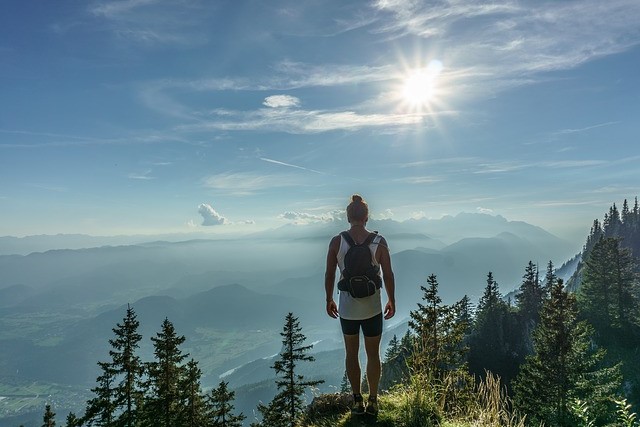Six Summer Hiking Tips to Stay Safe

There are many ways to prepare for your first hike. However, if it’s going to be done in the summer, there are some specific things you need to consider. First of the many is that a summer trek is a totally different experience compared to a winter or spring hike due to the amount of sun you’ll be battling. To help you gear up for that exciting hike under the summer sun, here are a few summer hiking tips you might consider packing with you.
Planning is key
Some expert hikers can make it seem like hiking is such an easy feat to accomplish. However, despite all those scenic photos that make it seem all fun in the sun, it is crucial to remember that hiking requires extensive planning and preparation. Your number one issue would be the weather. Planning your trip would include identifying the right trails to take, which in this case, should be anywhere at high altitude. There are many things that affect an area’s temperature, but the idea is that the air cools by 3.5 degrees for every 1,000 feet of altitude you take. This is important to remember as you’ll combat great heat outdoors in the summer.

It is also important to determine the best time of day to hike. Your window for cooler temperature narrows in the summer. During this season, you should plan your trip between 6 to 8 in the morning when it’s most likely still dewy and cool outdoors. Another option is to set your trail in the afternoon when outdoor heat is most likely to have subsided. Just don’t forget to pack stuff for a low light hike as you’ll probably still be trekking after the sun has already set.
Water is your lifeline
Even experts wouldn’t be able to stress enough how crucial it is to stay hydrated during a hike. While hiking, your body is in constant motion, sweating, and burning calories as you trail along. The last thing you want to happen is collapsing due to dehydration and heat stroke. To prevent any of these from happening, drink a liter of water for every hour of your trail. It is also better to have cold water as drinking warm water will only make you thirstier.
Dress according to occasion
While it sure is cool to look fashionable in your hiking photos, over- or under-dressing for a hike can be severely detrimental to your safety. As a general rule of thumb, you should wear clothes with light and breathable fabric when hiking during the summer.
Wear a hat or any form of protection for your head to shield it from the direct heat of the sun. Likewise, bring a pair of sunglasses to protect your eyes from direct heat and too much light as it could get difficult to see through very bright surroundings. And of course, be sure to select the appropriate footwear according to the trails you’ll be on, as discussed here.
Your load could make or break you
You would often hear experienced campers say to pack light. This is a good rule of thumb since hikes can go on for as long as several days or even weeks. Technically, the weight of your bag(s) isn’t as big of an issue in short hikes compared to longer ones. You’ll have shorter walking durations for shorter hikes, so you will only be carrying your bags for a short period. Whereas for longer hikes, the weight of your belongings can literally break you. Remember that your trails may involve complex terrains. And when hiking uphill for several days, a light backpack makes a whole lot of difference. Consider investing in trekking poles to help navigate the more challenging parts of the trail.

Don’t expect it to be sunny all day
It’s a no-brainer to expect a lot of sunlight in summer. But remember that when trekking high-altitude terrains like mountains, your destination might just have a weather system of its own. While it may be hot and humid down town, the mountains may actually be experiencing monsoons, so it’s always safer to check weather bulletins before setting off to your trails.
Stop and smell the flowers
You can be all pumped up with adrenaline from all the excitement while hiking. However, it is crucial to sit down under a shade at some point to hydrate and just relax your muscles—and yes, maybe to smell the flowers too and appreciate the view. While you may not always feel it, your muscles, especially your core and your legs, are in constant work during a hike. Taking breathers from time to time will allow your muscles to recover and your body temperature to cool down.
Hiking can be a challenging activity for a lot of reasons. But hiking under scorching hot temperatures during summer can be not only challenging but also very tricky. One does not simply jump into hiking like it’s a spontaneous walk in the park. Much like any other physical activity or sport, sufficient preparation and research are essential in gearing up for a worthwhile hike.
This guest post was authored by Cal Bailey

Cal Bailey runs Mountain Leon – a travel blog he started after two years on backpacking around the world. If you want to learn more about life on the road or tips for travelling, you can read his latest post about choosing the right sleeping bag.

